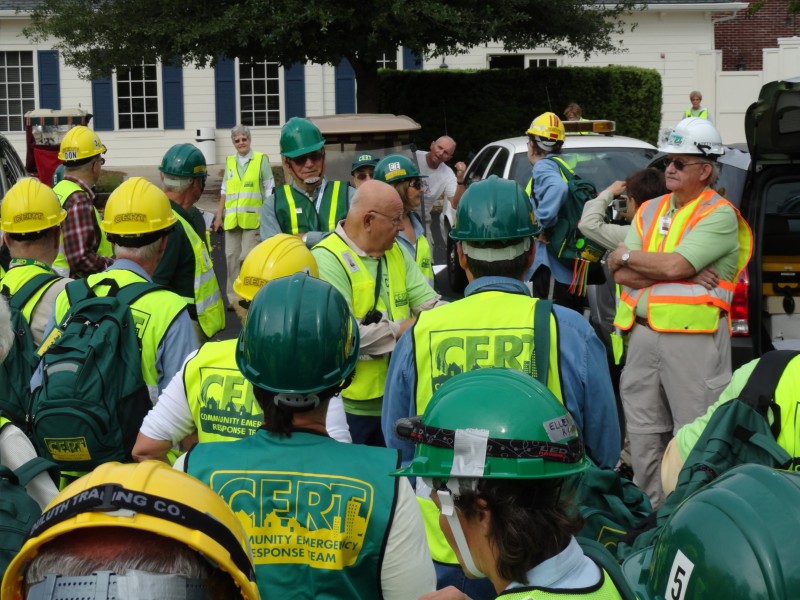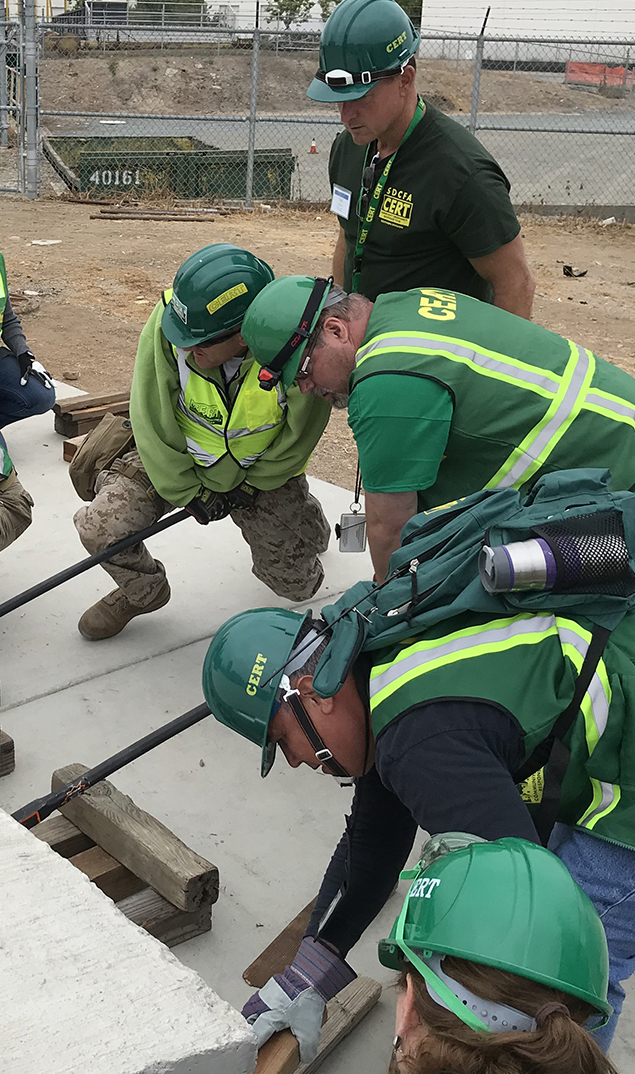Lehi CERT Training
Signup for TrainingNOTICE!
Lehi CERT in-person training!
The next Lehi CERT in-person training
will be held in 6-9PM
April 16, 23, 30, May 7
Course Fee*: $25
Location: Lehi Fire station
250 W. 2600 N, Lehi, UT 84043
*Includes PPE (helmet, hi-vis vest, safety glasses, gloves, N-95 mask)
NOTE: Two parts to CERT training – Online AND Hands-on
1) PRIOR to taking the Lehi CERT hands-on training, you must complete the online CERT training course. The online course is free. You can sign up and start your training now at this link.
https://tinyurl.com/CERTonlinetraining
2) The Lehi CERT Team holds occasional hands-on training based on the FEMA training syllabus consisting of nine training units. These are followed by a hands-on mock disaster simulation. You can sign up for the hands on training here:
Once you have completed the online AND the hands-on training listed above, you are considered trained and part of our team.
CERT Basic Training modules:
•Unit 1: Disaster Preparation
•Unit 2: CERT Organization
•Unit 3: Disaster Medical Operations (part 1)
•Unit 4: Disaster Medical Operations (part 2)
•Unit 5: Disaster Psychology
•Unit 6: Fire Safety & Utility Controls
•Unit 7: Light Search & Rescue Operations
•Unit 8: Terrorism & CERT Training
•Unit 9: Course Review, Final Exam & Disaster Simulation
Lehi CERT Member Advancement
After you complete your CERT Basic Training, you should begin working on additional training to build on your skills and knowledge, making you more valuable to your family and the community.
Advancement goes from Basic CERT to Levels 1 – 4.
The chart below outlines advancement requirements and includes links to the online training courses. Upon completion, please submit your training certificate to the LehiCERT Slack #training channel.

Why do we have Levels for Lehi CERT?
Anyone can take the CERT Basic Training Course. You don’t need to affiliated with any team to do so, and your training is just as valid as anyone else’s training. Anyone can be CERT Basic trained and it’s universal. Basic training only enables you to preform specific tasks within very specific circumstances, as outlined in the training, but this does not give you permission or jurisdictional authority to do so.
Everything beyond Basic Training is about being part of an organized team, under the direction, authority and responsibility of a jurisdiction or sponsor. As the chart above shows, you are not on the “team” until you do the extra items (especially a background check) to gain the Level 1 Team Member status. So the “Level” designation is reserved for Team Members, and the Basic course doesn’t automatically make you a team member. There should be some desire and commitment to be on the “Team”.
New for 2026!
Additional FEMA IS course training options:
IS-700.B: An Introduction to the National Incident Management System
IS-100.C: Introduction to the Incident Command System, ICS 100
IS-42.A: Social Media in Emergency Management
IS-230.E: Fundamentals of Emergency Management
IS-235.C: Emergency Planning
IS-240.C: Leadership and Influence
IS-241.C: Decision Making and Problem Solving
IS-242.C: Effective Communication
IS-244.B: Developing and Managing Volunteers
IS-288.A: The Role of Voluntary Organizations in Emergency Management
IS-315.A: CERT and the Incident Command System (ICS)
IS-317.A: Introduction to Community Emergency Response Team (CERTs)
IS-325: Earthquake Basics: Science, Risk, and Mitigation
IS-366.A: Planning for the Needs of Children in Disasters
IS-405: Overview of Mass Care/Emergency Assistance
IS-772.A: Individual Assistance Preliminary Damage Assessment Orientation
IS-800.D: National Response Framework, An Introduction
IS-815: ABCs of Temporary Emergency Power
IS-904: Active Shooter Prevention: You Can Make a Difference
IS-905: Responding to an Active Shooter: You Can Make a Difference
IS-907: Active Shooter: What You Can Do
IS-909: Community Preparedness: Implementing Simple Activities for Everyone
IS-951: DHS Radio Interoperability
All FEMA IS Courses
The University of Utah has online training materials covering the nine CERT modules. Once you compete the modules, you will receive a certificate. You will then provide this to our Training Coordinator, Wendy Shoop, who will then provide a hands-on “mock disaster” training opportunity for you to complete your CERT Training. Our next in-person training will be held in the Spring 2024.
“REMEMBER: When disaster strikes, the time to prepare has passed.” -Stephen Cyros
Volunteers needed!
Following a major disaster, first responders who provide fire and medical services may not be able to meet the demand for all the requests. Factors such as number of victims, communication failures, and road blockages will prevent people from accessing emergency services they have come to expect at a moments notice through 911. People will have to rely on each other for help in order to meet their immediate life-saving and life-sustaining needs.
Community Emergency Response Teams (CERT) are trained to help neighborhoods and communities mitigate disasters during the first 72 hours following a disaster when access by professional Emergency Response teams might be restricted.
The purpose of CERT training is to provide private citizens with the basic skills that they will need to handle many of their own needs and then to respond to their neighborhoods’ and communities’ needs in the aftermath of a disaster.





